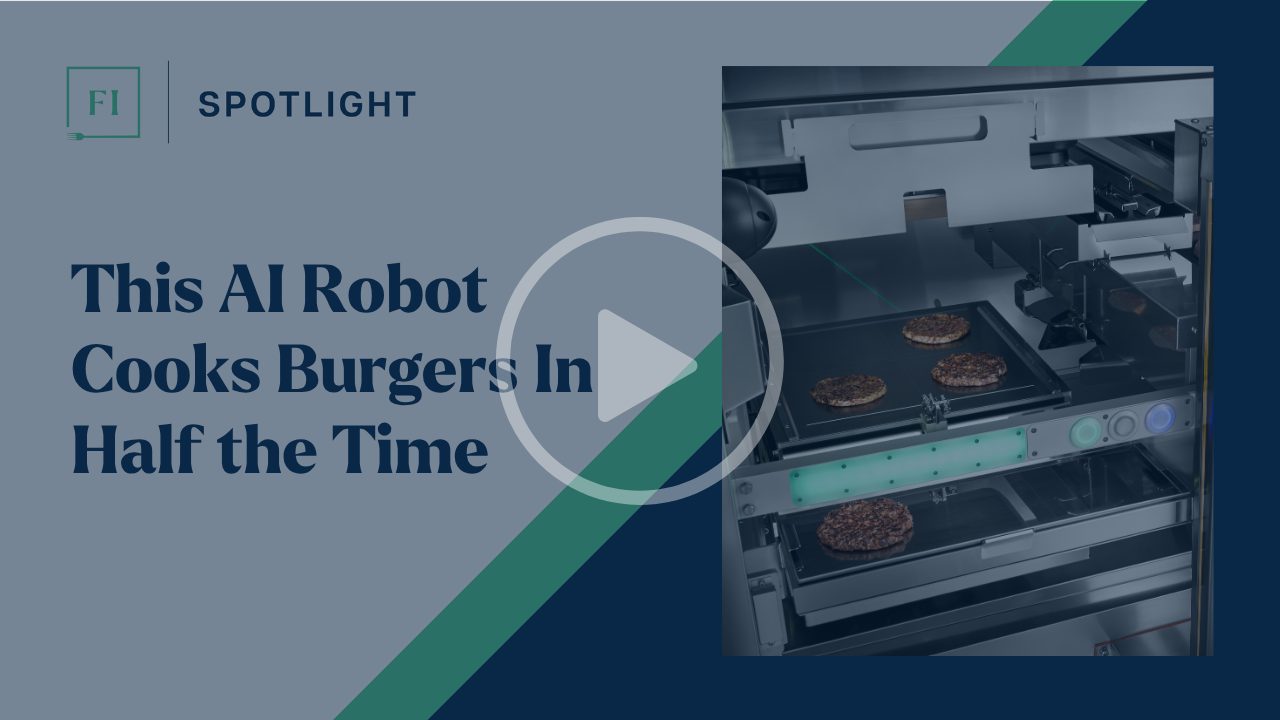Subscribe On Your Favorite Platform:
Food for Thought Leadership co-host Chris Campbell sits down with Robyn Carter, founder and CEO of Jump Rope Innovation, to explore the concept of the “return to real” in today’s food industry. With so much of life filtered through screens, algorithms, and ad-driven messaging, consumers are now seeking real food, real stories, and real connection. Robyn lays out how this trend is reshaping not only what we eat, but how we shop, dine, and engage with brands.
From clean-ingredient products on the retail shelf to immersive food-service experiences, Robyn shows how simplicity, transparency, and authenticity matter more than ever. She explains why consumers are returning to basics—like butter, dairy milk, and real meat—and how retailers and restaurants can respond by delivering ease, origin stories, and meaningful human interactions. At the same time, she addresses how technology — including AI — can support this return, as long as it reinforces rather than replaces human connection.
Looking ahead, Robyn highlights the next frontier of the trend: longevity and women’s health, and deeper provenance through farm-to-table narratives. Whether you’re a CPG brand, a retailer, or a food-service operator, this conversation offers timely insights and actionable ideas to align your strategy with a consumer mindset that values what’s real.
Transcript (Edited for Brevity/Clarity)
Chris: When we talk about The Return to Real, it’s a phrase people might interpret differently. How do you define it in the context of the food industry?
Robyn: We’re surrounded by so much digital noise — so many claims, images, and choices — that consumers are overwhelmed. They’re asking, “What’s real? What’s meaningful?” The Return to Real is about people craving transparency, simplicity, authenticity, and connection. They want to know where their food comes from, who’s behind it, and how it fits into their lives.
Chris: And that’s something we’ve been seeing across categories. It’s almost like people want to trust again — in what they eat and who they buy from.
Robyn: Exactly. It’s not just food; it’s cultural. People want fewer barriers between themselves and the real world — tangible experiences, honest stories, and products that feel grounded.
The Return to Real’s Impact on CPG and Retail
Chris: Let’s start on the CPG and retail side. How are manufacturers and retailers being influenced by this trend?
Robyn: First, consumers want simpler, recognizable ingredients. We’re seeing things like butter, dairy milk, and meat make a comeback. People are saying, “Just give me the real thing so I don’t have to decode it.”
Second, storytelling matters. Brands need to make their origin stories visible — who they are, how they produce, and what they stand for. Even if not everyone engages with that information, its availability signals pride and transparency.
And finally, value alignment is huge. Consumers have limited budgets, but they’re still willing to support brands that reflect their values or stories they believe in.
Chris: That’s really interesting. Especially since cooking at home is back — but for different reasons across generations.
Robyn: Yes. During the pandemic, older consumers “skilled up” in cooking out of necessity. But younger consumers — Gen Z, for example — are learning by choice now. They’re inspired by social media, but they want easy wins. Brands can help by making cooking accessible: providing products that deliver authentic flavor without 17 ingredients or three store trips.
Chris: So retailers should be thinking about how to make that process easier.
Robyn: Absolutely. Retailers can support this by creating experiences that make shopping simple and intuitive — cross-merchandising complete meal solutions, for instance, or showcasing trending recipes in-store. It’s about helping shoppers connect inspiration to action in a real, physical space.
Foodservice and the Experience Economy in the Return to Real
Chris: Let’s shift to food service. What does The Return to Real mean for restaurants?
Robyn: It comes down to experience and connection. Dining out should feel like more than a transaction. Guests want to feel something — a sense of place, people, and purpose.
For some restaurants, that’s storytelling: highlighting the chef, the ingredients, or local sourcing. For others, it’s simply making the environment more communal and human.
Chris: Even large chains seem to be leaning into that. I was in a Chili’s recently, and they had local photography and art on the walls — it actually felt connected to the community.
Robyn: Exactly. Chili’s is a great example. You know what you’re getting — comfort, consistency, accessibility — but they’ve localized the experience. Authenticity doesn’t mean exclusivity; it means being intentional about how you create real connection, whether you’re a neighborhood spot or a national brand.
Health, Wellness, and “Real” Ingredients in the Return to Real
Chris: Let’s talk about how this intersects with health and wellness. We’re seeing everything from seed oils being swapped out to dyes being phased out. How does real play into that?
Robyn: The two are deeply linked. People are redefining wellness for themselves. Instead of following rigid diets like keto or paleo, they’re personalizing it — asking, “What’s right for me?”
Consumers are gravitating toward real food ingredients as a signal of health. They’re also becoming more discerning: Is this protein claim meaningful? Is this amount of fiber actually helpful? There’s growing skepticism toward vague “better-for-you” claims.
We’ll also see continued focus on gut health, longevity, and individualized nutrition, aided by tech and AI insights. But at the core, it’s about getting back to foods that feel whole and trustworthy.
Chris: What about plant-based? It seems to be in a bit of a crossroads moment.
Robyn: It is. When plant-based first took off, it was exciting just because it was new. But as people started comparing labels and prices, many realized those products weren’t necessarily “better.”
The plant-forward approach — using actual plants and whole ingredients — is where the energy is moving. People still want more plants in their diet, but not ultra-processed imitations.
Technology, AI, and Authenticity
Chris: How does technology fit into a movement built on authenticity? AI in particular seems at odds with “real.”
Robyn: That’s the tension — but I see AI as a tool, not a replacement for human connection.
We recently visited a Sweetgreen where AI helps build salads with precision and speed. But humans still hand the bowls to customers, add finishing touches, and chat at the counter. The result? More efficiency and more human interaction.
When used well, AI lets people focus on what’s truly human: connection, creativity, and service.
Chris: So the key is balance — using technology to enhance real experiences rather than replace them.
Robyn: Exactly. The Return to Real isn’t anti-tech; it’s about integrating tech in ways that serve people, not the other way around.
Looking Ahead
Chris: What’s on your radar for 2026?
Robyn: Two things: longevity and women’s health — we’ll see more functional foods and supplements tailored to specific life stages — and farm-to-product authenticity.
Farmers are becoming part of the storytelling. We saw a brand at the Fancy Food Show labeled “Farmer-Made French Fries.” That’s powerful because it restores trust. When something comes directly from the source, it just feels real.









